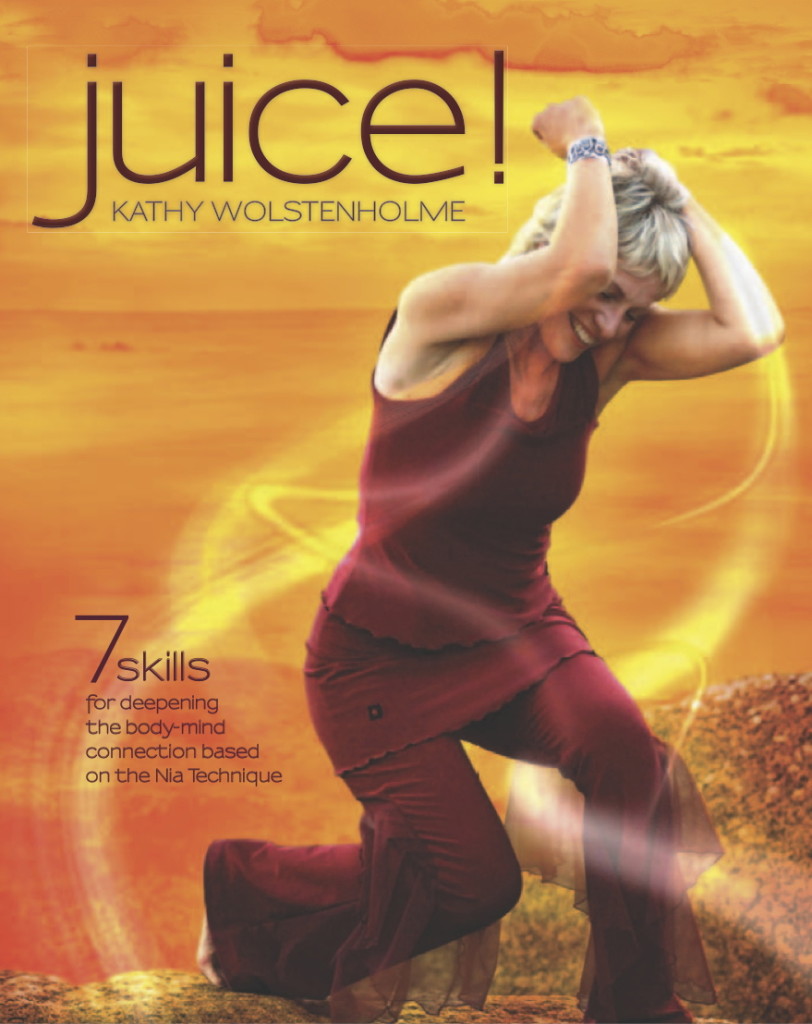Two Helpful Neuroplasticity Books
Neuroplasticity’s Role in Keeping us Functionally Youthful and Engaging
By Ageless Grace Educator Kathy Wolstenholme – Author of Juice! 7 skills for deepening the body mind connection (published August 2012, Cape Town, South Africa)
Neuroplasticity Books
 Norman Doidge in The Brain that Changes Itself (Penguin Group. New York. 2007) says our brains are not the stiff, inflexible, programmed-at-birth, not-to-be modified, hardwired machine we thought they were. The brain can change its own structure and function through thinking, learning and acting.
Norman Doidge in The Brain that Changes Itself (Penguin Group. New York. 2007) says our brains are not the stiff, inflexible, programmed-at-birth, not-to-be modified, hardwired machine we thought they were. The brain can change its own structure and function through thinking, learning and acting.
I venture to say that the brain also changes its structure by ‘coming to its senses’, activating real (physical) or imaginary (mental) scenes for the senses to encounter. By choosing alternate responses to different stimuli our senses help us build new pathways of neurological expression.
Firstly, it’s important to note that our senses have receptor cells that send electric signals via nerves to areas of the brain mapped to accept that information.
Doidge adds, “Much of the brain is ‘polysensory’ – its sensory areas are able to process signals from more than one sense. This can happen because all our sense receptors translate different kinds of energy from the external world, no matter what the source, into electrical patterns that are sent down our nerves. These electrical patterns are universal language ‘spoken’ inside the brain – there are no visual images, sounds, smells or feelings moving inside our neurons.” (p. 18, The Brain that Changes Itself)
Let’s look at increasing neural pathways by experimenting with our sense of touch.
Our sense of touch is not just our ability to sense the texture and temperature of what we touch. Our sense of touch does not always have to come from being in contact with something else in order to register. Touch is also the ability to sense how we touch. The ‘energy’ or electricity of the touch is what is transmitted to our brains.
In other words, our hands are free to chop, smooth, and knead away to our heart’s content without needing wood or food as a recipient. Indeed our whole body is welcome to jiggle, wiggle and giggle, no matter what inspires it!
 In my book Juice! skill 5, ‘Engage’, identifies ‘touch’ as our body’s medium of expression.
In my book Juice! skill 5, ‘Engage’, identifies ‘touch’ as our body’s medium of expression.
From Juice!:
”When we speak of touch we usually refer to hands, yet the whole body has a sense of touch…. (even our eyes and voice have a touch).
Touch is based on subconscious calculations that are ongoing, subtle and neuromuscular (from nerves to muscles, bypassing the thinking brain, no mental decision making). Our brains offer and process ‘touch’ variables of pace, range and expression (ie: timbre) to and from our nerves like electrical impulses shuttled along power lines.
We find the correct touch when we’re observant (through pausing), and in answer to the question ‘How do I want or need to be in this situation?” Inevitably our response results in a variety of touches: from a delicate brush to a light press, a nudge or a shove. “ (calibrated into the hands, the eyes, or the voice!)
This is where the skill of ‘Engage’ comes in. Just as athletes experiment with a myriad of different strokes or touches to increase their range of response, we can become more exciting to others and ourselves by having a variety of strokes at our fingertips”.
Let’s stop “running our energy” habitually, ie: the same type of electrical pattern in the same way to the same part of the brain continually.
Juice! happens when we break out of habit into versatility in expression. Speed, depth, volume and intensity are all variables of our touch.
He Who Feels it Knows it More
An Exercise:
Laban Movement Analysis breaks touch into 3 categories:
Time, Weight of the movement, and Manner, or how you move through space.
Time: Sudden or Sustained
Weight: Light, Heavy, Direct or Indirect.
Manner: (defined by 8 effort qualities): slash, dab, punch, press, wring, glide, flick, float
Put on some music and explore the endless possibilities through your body – ie: your feet, your arms, your whole body. Now have fun adapting each manner into your eyes and voice. How would your interaction be affected by each energy?
What is your signature touch? Has anyone ever commented on your unique touch?
ENJOY playing with different touches to develop multi dimensionality and creativity!